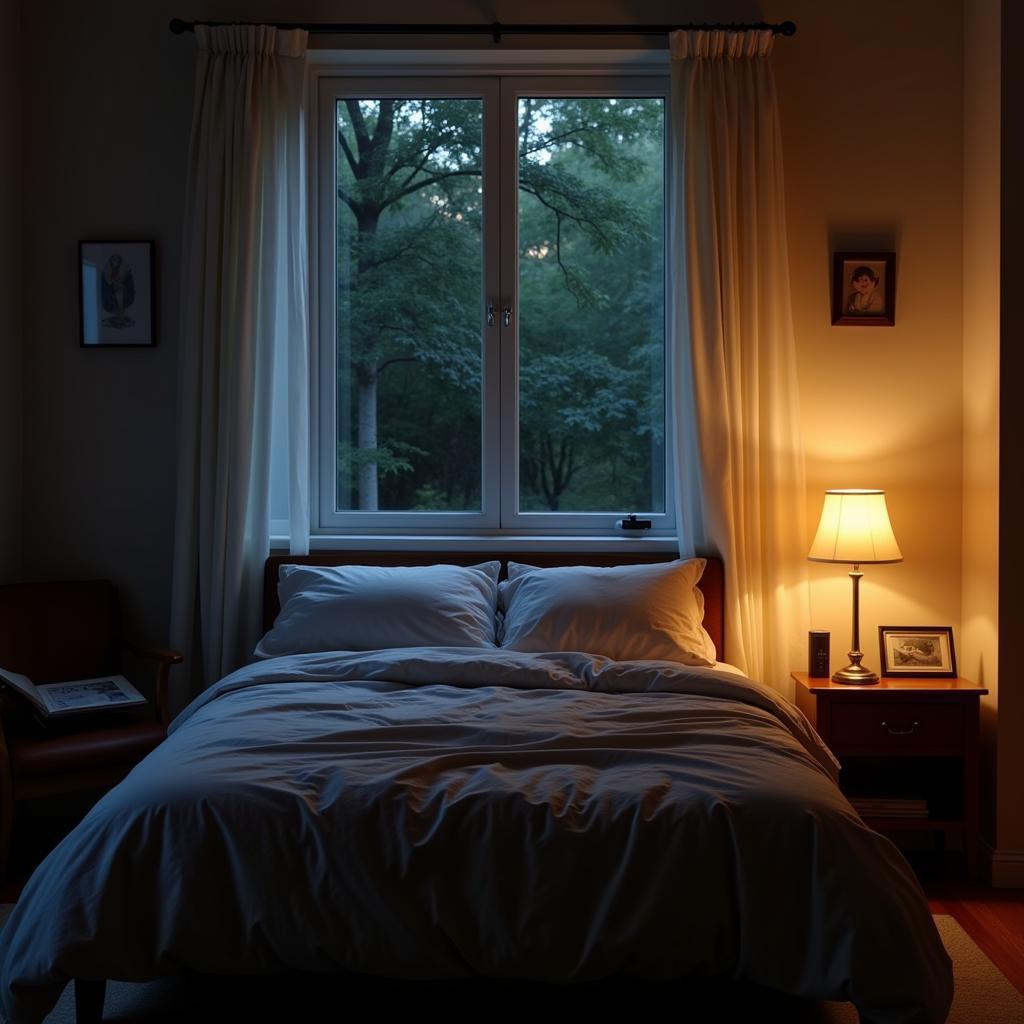Choosing the right light color for your bedroom can significantly impact your sleep quality. The colors we surround ourselves with influence our mood and even our physiological responses. Understanding which light colors promote relaxation and which ones hinder sleep is key to creating a restful sanctuary.
The Science of Light and Sleep
Light plays a crucial role in regulating our circadian rhythm, our internal biological clock that governs sleep-wake cycles. Exposure to certain light wavelengths can suppress melatonin production, a hormone essential for sleep. Conversely, other colors can promote relaxation and prepare the body for rest. Knowing how different light colors affect our sleep is essential for creating an optimal sleep environment. what light color is best for sleeping explores this in more detail.
Blue Light: The Sleep Disruptor
Blue light, emitted by electronic devices like smartphones and laptops, is particularly disruptive to sleep. It mimics daylight, signaling the brain to stay awake and alert. Minimizing exposure to blue light in the evenings is crucial for promoting healthy sleep patterns.
What is the best light color for blocking blue light? Warm colors like red and amber are best for blocking blue light.
Red and Amber Light: Setting the Stage for Sleep
Red and amber light, on the other hand, have been shown to have a minimal impact on melatonin production. These warm, calming colors can help create a relaxing atmosphere conducive to sleep. Incorporating red or amber light into your evening routine can signal to your body that it’s time to wind down.
What are the benefits of red light for sleep? Red light can improve sleep quality and duration.
Creating Your Ideal Sleep Sanctuary with Color
Choosing the right light color is just one piece of the puzzle. Consider your overall bedroom decor and how different colors can contribute to a peaceful atmosphere.
Wall Colors That Promote Sleep
While light color has a direct impact, wall colors also play a significant role. Soft, muted tones like blues, greens, and lavenders are known for their calming effects. Avoid stimulating colors like bright yellows or oranges in the bedroom. what is the best light colors for sleep provides a more comprehensive guide on choosing the best light and wall colors for your bedroom.
What wall colors are best for sleep? Soft blues, greens, and lavenders create a calming atmosphere.
The Power of Dimming
Regardless of the light color you choose, incorporating a dimmer switch can be incredibly beneficial. Gradually dimming the lights in the evening can mimic the natural transition to darkness, signaling to your body that it’s time to sleep.
 Dimmable bedroom lights for better sleep
Dimmable bedroom lights for better sleep
Beyond Light Color: Other Factors Affecting Sleep
While light color is crucial, other factors also influence sleep quality, such as room temperature, noise levels, and bedding. Creating a comfortable and consistent sleep environment is key to achieving restful sleep. what’s the best color light for sleeping discusses these factors in detail.
What else can I do to improve my sleep? Consider room temperature, noise levels, and comfortable bedding.
Expert Insights
Dr. Anya Sharma, a sleep specialist, emphasizes, “Light color plays a significant role in regulating sleep. Choosing calming colors and minimizing blue light exposure in the evenings can significantly improve sleep quality.”
Conclusion
Choosing the right light color for sleep is an essential step towards creating a restful bedroom environment. By opting for warm, calming colors like red and amber, and minimizing exposure to blue light, you can promote relaxation and improve your sleep quality. Remember to consider other factors like wall color and dimming capabilities to create your ideal sleep sanctuary. what is the best color light to sleep with offers a concise summary of the key takeaways.
FAQ
- What is the worst light color for sleep? Blue light.
- What is the best light color for sleep? Red or amber light.
- Can light color affect my sleep quality? Yes, significantly.
- Should I use a night light? If so, choose red or amber.
- What other colors can promote sleep? Soft blues, greens, and lavenders.
- How can I minimize blue light exposure? Use blue light filters on devices and avoid screens before bed.
- Is it important to have a dark bedroom for sleep? Yes, darkness promotes melatonin production.
For further assistance, please contact us at 0373298888, email us at [email protected], or visit our showroom at 86 Cầu Giấy, Hà Nội. Our customer service team is available 24/7.

